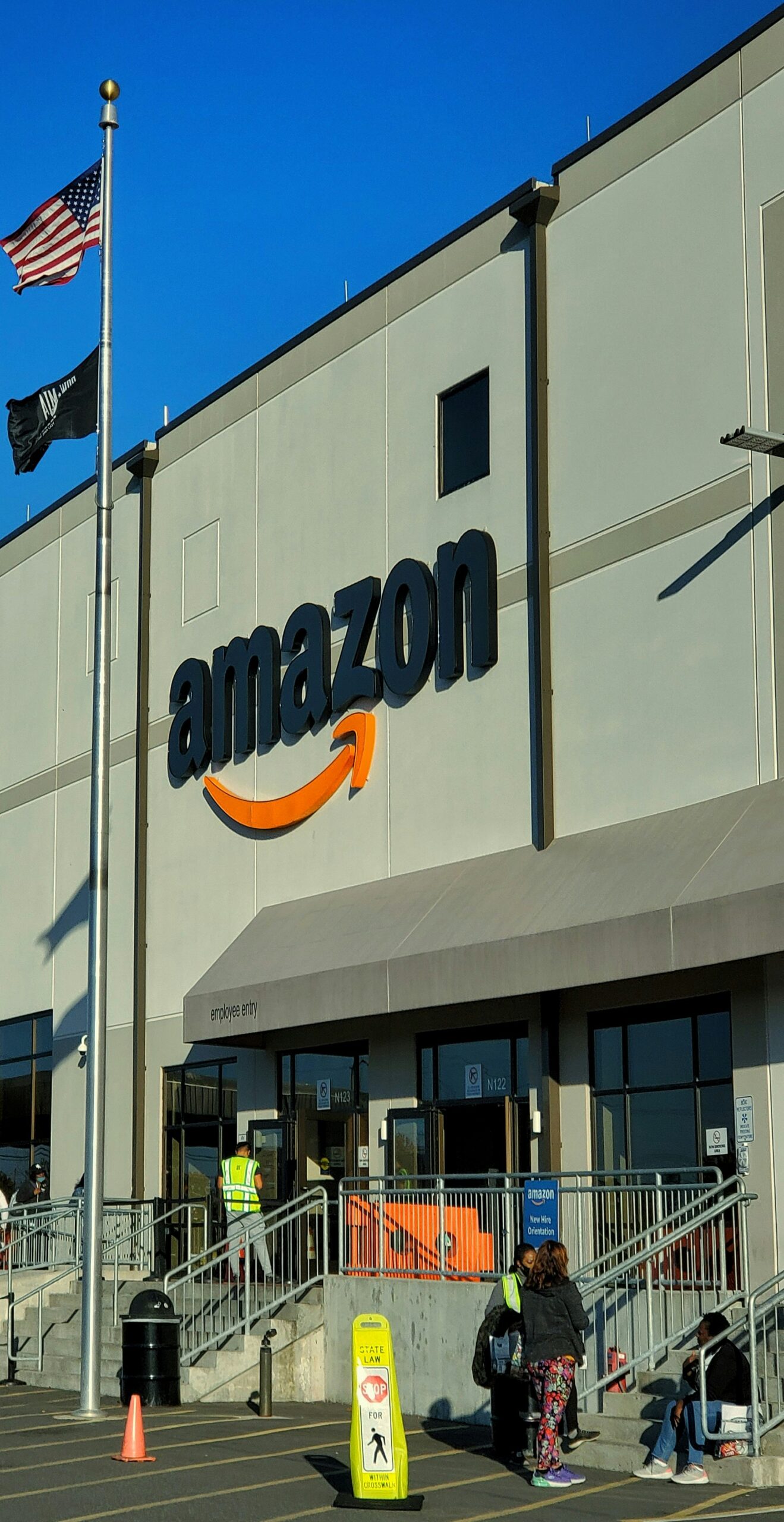Amazon unveiled its largest facility in Massachusetts on Monday, a staggering five-story warehouse in North Andover with almost 4 million square feet of space to hold everything from books and DVDs to cans of soup.
The fulfillment center on the site of a former telephone company factory cost about $400 million to build andwill employ 1,500 people, Amazon said. As big as 66 football fields, the facility has 12 miles of conveyor belts to handle hundreds of thousands of orders per day, the company said.It is also home to thousands of robots that help automate the movement of goods.
Though it opened in January, Amazon invited Governor Maura Healey and other state and local officials to a ribbon-cutting ceremony on Monday morning. North Andover approved the project in 2019, after losing out on a bid to host Amazon’s HQ2 office campus, granting $27 million of property tax breaks for the warehouse over 10 years.
The facilityis Amazon’s first highly automated warehouse in Massachusetts, Tye Brady, chief technologist for Amazon Robotics, told the Globe in an interview. Looking like a proud papa, Brady, who is based in Massachusetts, gave a Globe reporter a tour of the facility the day before the ribbon cutting. “It just showed up like a big baby bouncing boy,” Brady said with enthusiasm.
All of the North Andover robots are designed in-house and manufactured at one of two Amazon factories in Massachusetts. In fact, all of the 750,000 robots Amazon has deployed worldwide were built in Massachusetts, Brady said. (Amazon Robotics grew out of Amazon’s acquisition of North Reading-based Kiva Systems in 2012.)
“It’s applied robotics,” he said. “They’re not doing back flips or dances out there on the floor — I love those, I get it — but they’re doing the job of moving goods on time and very reliably.”
The entire warehouse is designed to handle items that are no larger than 18-1/2 inches on a side — just right to fit in the common yellow plastic totes that are the blood vessels of the 21st-century logistics industry. The new warehouse ismore than twice the size of Amazon’s Fall River facility that handles larger goods.
Brady explained that the facility employs three distinct types of robots, which are intended to take over menial, monotonous, and repetitive jobs.
On the first floor, workers unload cases of goods from trucks and unpack all of the items into yellow totes. The totes are then sent to one of the top four floors where items are stored.
On each storage floor, a vast central space is fenced off as the domain of Amazon’s Hercules robots — round, flat machines on wheels that zip under tall shelving pods filled with stored items. The robots move the shelving pods where they are needed. Each pod has four sides of shelves and each side has 30 or more cubbies holding different items.
Around the edges of the floor, workers at high-tech stations receive totes filled with items needing to be stored. As they lift goods from the tote, an optical scanner identifies each item. A Hercules robot brings a shelving pod to the worker’s station. The worker can place the item in any cubby on the pod that looks like it has enough room, while a Lidar sensor tracks exactly where the item ended up. Like an unimaginably complicated jigsaw puzzle, millions of items are distributed at random across thousands of shelving pods.
But the system knows where every item is. Between the time when a customer selects items on Amazon’s website and clicks to order the items for delivery, the company’s systems locate the items and calculate two ways to deliver them to the customer’s front door for redundancy, Brady said.
At other stations around the edges, workers conduct the process of fulfilling customer orders. Empty totes are filled with orders and returned to the first floor, where orders are packaged and shipped.
Once ready for shipping, the system of getting each package to the correct truck relies on two other Amazon robots. As packages flow along a conveyor belt, an automated arm dubbed Robin lifts up and scans packages one at a time and sets them down on a mobile robot called Pegasus. Each wheeledPegasus robotthen carries the package to a conveyor that will bring the package to the correct truck bay.
Amazon says the increased use of robotics improves safety and cuts down on worker injuries.
Gordon Burtch, a professor at Boston University Questrom School of Business who studies workplace automation, said studies have confirmed that Amazon’s robots reduce the number of severe injuries in the company’s facilities. But, he said, his research alsohas found an increase in less severe injuries from repetitive tasks.
“They are making the work safer for warehouse associates,” Burtch said. But, the warehouse workers among robots “are not only required to work more quickly, they also end up standing in one spot, performing the same monotonous task over and over. This combination of speed and repetition leads to more stress-based injuries among workers.”
The site of the North Andover warehouse was an AT&T telephone factory for decades, employing as many as 12,000 workers at its peak in the 1980s. After the breakup of the Bell system, the factory was owned by Lucent Technologies and made networking gear until it closed in 2008.


